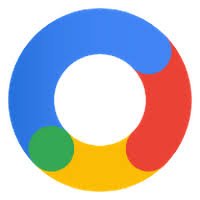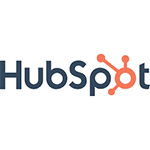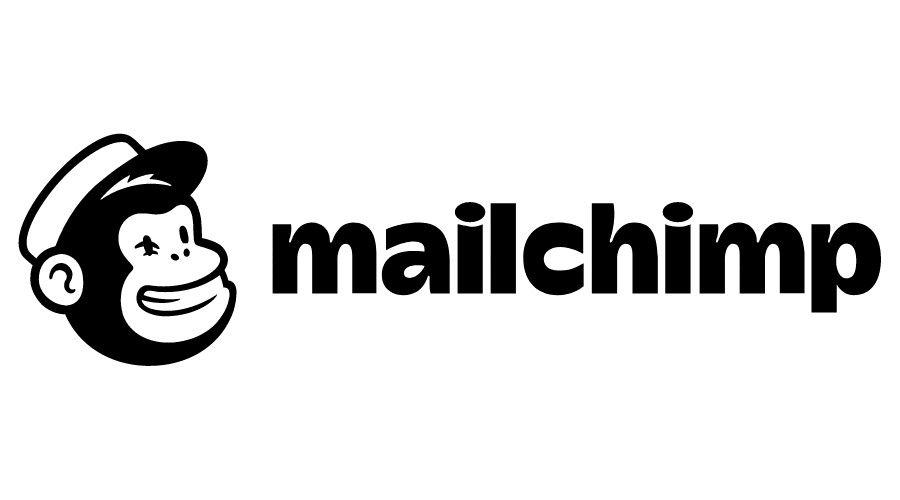What is a Doctors?
Doctors are medical professionals who are trained and licensed to diagnose, treat, and prevent illnesses, injuries, and diseases in humans. They play a crucial role in healthcare systems worldwide, providing primary care, specialized medical services, and emergency care to patients of all ages and backgrounds. Doctors undergo extensive education, training, and certification to acquire the necessary knowledge and skills to practice medicine effectively.

Here are some key aspects of doctors and their roles:
Medical Education: Doctors typically complete a bachelor’s degree followed by medical school, where they earn a Doctor of Medicine (M.D.) or a Doctor of Osteopathic Medicine (D.O.) degree. Medical school education includes classroom instruction, laboratory work, and clinical rotations in various medical specialties.
Residency Training: After graduating from medical school, doctors undergo residency training in their chosen specialty, which can last from three to seven years, depending on the specialty. During residency, doctors gain hands-on experience in hospitals, clinics, and other healthcare settings under the supervision of experienced physicians.
Specialization: Doctors may choose to specialize in a particular area of medicine, such as internal medicine, pediatrics, surgery, obstetrics and gynecology, psychiatry, cardiology, oncology, dermatology, neurology, or many other fields. Specialization requires additional training, certification, and sometimes fellowship programs.
Patient Care: Doctors are responsible for providing comprehensive medical care to patients, including performing physical examinations, ordering diagnostic tests, interpreting test results, diagnosing medical conditions, developing treatment plans, prescribing medications, and monitoring patients’ progress.
Preventive Care: In addition to treating illnesses and injuries, doctors emphasize preventive care to help patients maintain good health and reduce the risk of developing chronic diseases. This may include vaccinations, screenings, health counseling, and lifestyle interventions.
Collaboration: Doctors often work closely with other healthcare professionals, including nurses, physician assistants, pharmacists, therapists, and specialists, to coordinate patient care and ensure comprehensive treatment.
Medical Research: Some doctors engage in medical research to advance scientific knowledge, develop new treatments and therapies, and improve healthcare outcomes. They may conduct clinical trials, publish research papers, and contribute to medical literature.
Continuing Education: Medicine is a rapidly evolving field, and doctors are required to participate in continuing medical education (CME) activities to stay updated on the latest medical advancements, guidelines, and best practices.
About Us
Empowering Healthcare Through Innovative Marketing and Technology Solutions
Where our mission is to elevate the success of healthcare professionals and institutions through cutting-edge marketing, automation, public relations, and technology services. We are a dedicated agency specializing in creating tailored strategies that drive growth, streamline operations, and amplify your presence in the competitive healthcare industry.

Who We Are
We are a team of experienced professionals with a passion for transforming the healthcare sector. Our diverse expertise spans marketing, automation, public relations, website development, and software solutions, all aimed at helping doctors, clinics, hospitals, and other healthcare providers thrive in today’s digital age.
Our Promise
We promise to bring a fresh perspective, innovative ideas, and a results-driven approach to your healthcare business. Whether you are looking to attract new patients, streamline your operations, or enhance your online presence, we are here to help you achieve your goals and reach new heights.
What We Do
- Marketing Solutions: Crafting strategic marketing campaigns that resonate with your target audience. From digital advertising to content creation, we help you stand out in a crowded market.
- Automation Services: Streamlining your operations with state-of-the-art automation tools. We help you manage workflows, patient interactions, and marketing efforts more efficiently.
- Public Relations: Building and maintaining a positive public image through effective PR strategies. We handle media relations, community outreach, and reputation management.
- Website Development: Designing and developing user-friendly, professional websites that attract and convert potential patients. Our websites are optimized for performance, security, and SEO.
- Software Development: Creating custom software solutions tailored to your specific needs. Whether it’s practice management systems, patient portals, or other healthcare technologies, we develop solutions that enhance your services.
Our Approach
- Expertise in Healthcare: Our team has deep knowledge of the healthcare industry and understands the challenges and regulations that healthcare professionals face.
- Data-Driven Strategies: We use data analytics and insights to inform our strategies, ensuring that every decision is based on real-world evidence and leads to tangible outcomes.
- Innovative Solutions: We stay at the forefront of technological advancements to provide you with the latest and most effective tools for your success.
- Commitment to Results: We are dedicated to generating high-quality leads and helping you achieve your business goals. Your success is our success.
Industries we Served
IVF Clinic
OB-GYN
Psychiatry
Med Spa
Plastic Surgery
Dermatology
Pain Managements
Gasteoenterology
Dentistry
Eyecare
Cardiology
Ophthalmology
Pathology
Optometry
Radiation Oncology
Urology
Hematology
Neurology
Orthopedic
Pediatrics
ENT
Salon
Primary Care
Mental Health
General Surgery
Veterinary
Holistic Medicine
Clinical Biology
Anesthesiology
Thoracic Surgery
Allergy & Immunology
Internal Medicine
Psychologist
Private Clinic
Private Hospital
Private Nursing Home
Our Values
- Integrity: We operate with honesty and transparency in all our dealings.
- Excellence: We strive for the highest standards in every project we undertake.
- Collaboration: We work as partners with our clients, valuing their input and building long-lasting relationships.
- Innovation: We embrace creativity and continuous improvement to deliver cutting-edge solutions.
Step-by-Step Guides
We wrote these guides to walk you through using other tools to get things done. Follow these workflows, and you will be successful.
Establish Your Objectives and Identify Your Audience
Establish what you aim to achieve through your digital marketing efforts—such as increasing website traffic, generating leads, or boosting sales. Then, identify your target audience by analyzing their demographics, interests, and online behavior.
Develop a Digital Marketing Plan
Choose the most effective digital marketing channels based on your goals and target audience. Develop a content strategy that resonates with your audience’s interests and preferences. Set a budget and allocate resources accordingly.
Establish Your Digital Footprint
Develop or refine your website to make sure it is user-friendly, mobile-responsive, and search engine optimized. Create and optimize profiles on key social media platforms with engaging visuals and informative content.
Content Creation and Distribution
Develop high-quality content that educates, entertains, or solves problems for your target audience. Utilize various content formats such as blog posts, videos, infographics, and podcasts. Share your content across different channels to reach a wider audience.
Engage with Your Audience
Respond promptly to comments, messages, and reviews on social media and other platforms. Encourage discussions and interactions with your audience by asking questions and seeking feedback. Personalize your communication to make your audience.
Track and Analyze Performance
Use analytics tools like Google Analytics, social media insights, and email marketing metrics to track the performance of your digital marketing campaigns. Monitor key performance indicators (KPIs) such as website traffic, engagement rates.
Our Feature List
Why We Are The Best
Search Engine Optimization
Search Engine Optimization (SEO) involves optimizing your website’s content and structure to improve its ranking in search engine results and increase the number of visitors.
Content Marketing
Content marketing is a strategic approach focused on creating and distributing valuable, relevant, and consistent content to attract and engage a target audience with the goal of driving profitable customer action.
Social Media Marketing
Social Media Marketing (SMM) involves leveraging social media platforms to connect with your audience, build brand awareness, drive website traffic, and ultimately achieve your business goals. Below,
Email Marketing
Email marketing remains one of the most effective channels for reaching your audience, nurturing leads, and driving conversions. This guide will cover the essential aspects of email marketing, including strategy development, execution, and best practices.
Pay-Per-Click Advertising
Pay-Per-Click (PPC) advertising is a popular digital marketing strategy where advertisers pay a fee each time one of their ads is clicked. Essentially, it’s a way to buy visits to your site rather than attempting to “earn” those visits organically through search engine optimization (SEO).
Analytics and Reporting
Analytics and reporting are critical aspects of modern business operations, decision-making, and strategy development. Let’s break down the components of these processes and explore best practices, tools, and strategies for effective analytics and reporting.
We Provide Better Service?
We believe great design should be affordable. That’s why our services cost less than half the price of a full-time designer.

WordPress

Google Analytics

Ahrefs

HubSpot

Mailchimp

Buffer

Getlead

Analytics
Our Google Ads Services Include
Search Ads
Search ads, or search engine marketing (SEM), are a type of online advertising displayed alongside search engine results based on user queries. When users enter specific keywords into search engines like Google or Bing, relevant ads appear at the top or bottom of the results page. These ads are targeted and triggered by the keywords users search for, allowing advertisers to reach potential customers actively seeking related products or services.
Search ads operate on a pay-per-click (PPC) model, meaning advertisers are charged only when a user clicks on their ad. This model offers precise targeting, budget control, and measurable results. Performance is tracked through metrics such as click-through rate (CTR), conversion rate, and return on ad spend (ROAS).
The effectiveness of search ads lies in their ability to capture high-intent traffic. Users searching for specific terms are often in the decision-making phase, making them more likely to engage with ads relevant to their needs. For optimal results, search ad campaigns require strategic keyword selection, engaging ad copy, and continuous optimization.
Remarketing
Remarketing, also known as retargeting, is a digital advertising strategy that focuses on re-engaging users who have previously interacted with a website or app but did not complete a desired action, such as making a purchase. By using cookies or tracking pixels, remarketing tracks these users’ online behavior and serves them targeted ads as they browse other sites or social media platforms.
This approach leverages user data to deliver personalized ads based on their past interactions, such as the specific products they viewed or the pages they visited. Remarketing helps keep a brand top-of-mind and encourages users to return and complete the conversion.
Remarketing can be highly effective due to its targeted nature, as it reaches users who have already shown interest in the brand. It can improve ad relevance and increase conversion rates by addressing potential customer hesitation. Performance metrics such as click-through rate (CTR), conversion rate, and return on ad spend (ROAS) are used to gauge success and optimize campaigns. Effective remarketing requires well-segmented audience lists and tailored ad creatives to maximize impact.
Gmail
Gmail is a widely used email service developed by Google, known for its robust features and integration with other Google services. Launched in 2004, Gmail offers users a user-friendly interface, a powerful search function, and substantial storage capacity. It supports various email protocols and is accessible via web browsers, mobile apps, and email clients.
Key features of Gmail include advanced spam filtering, customizable labels and folders, and seamless integration with Google Drive, Calendar, and Meet. Its built-in AI capabilities help with smart replies, email categorization, and prioritization of important messages. Gmail also provides strong security measures, including two-factor authentication and encryption, to protect user data.
For businesses, Gmail is available through Google Workspace (formerly G Suite), offering additional tools for collaboration and productivity, such as shared drives and team chat. Its ease of use, reliable performance, and integration with Google’s ecosystem make Gmail a popular choice for both personal and professional communication.
Display Network
The Display Network, also known as the Display Advertising Network, is a digital advertising platform that enables advertisers to place visual ads across a vast network of websites, apps, and other digital properties. Managed by platforms like Google Ads, the Display Network reaches users across millions of sites and applications, offering extensive reach and targeting options.
Display Network ads include various formats such as banners, videos, and interactive rich media. These ads are displayed to users based on contextual targeting, demographic information, or past browsing behavior. Advanced targeting features, like remarketing and interest-based targeting, allow advertisers to refine their audience and improve ad relevance.
One of the key benefits of the Display Network is its ability to increase brand visibility and drive engagement through visually appealing ads. Advertisers can track performance metrics such as impressions, click-through rates (CTR), and conversions to evaluate the effectiveness of their campaigns. By leveraging the Display Network, businesses can enhance brand recognition, reach a broader audience, and achieve their advertising objectives with a diverse range of ad formats and targeting capabilities.
Youtube Ads
YouTube Ads are a powerful form of video advertising that leverages the vast audience and engagement of YouTube, the world’s leading video platform. Advertisers can create various ad formats, including skippable and non-skippable video ads, bumper ads (short, non-skippable ads), and overlay ads that appear as banners over videos.
YouTube Ads offer precise targeting options, allowing advertisers to reach audiences based on demographics, interests, search history, and viewing behavior. Advertisers can also utilize contextual targeting, placing ads on videos related to specific topics, and leverage remarketing to re-engage users who have previously interacted with their content or website.
Key benefits of YouTube Ads include high engagement rates due to the platform’s video-centric nature and the ability to measure performance with detailed analytics. Metrics such as view-through rate (VTR), click-through rate (CTR), and conversion tracking help assess ad effectiveness and optimize campaigns.
Overall, YouTube Ads provide a dynamic way to connect with a global audience through compelling video content, offering significant opportunities for brand awareness, lead generation, and customer acquisition.
Mobile App Ads
Mobile App Ads are a specialized form of advertising designed to promote applications within mobile environments. These ads appear across various platforms, including app stores, social media apps, and mobile websites. They come in multiple formats, such as banner ads, interstitial ads (full-screen ads), native ads (integrated with app content), and rewarded video ads (where users earn rewards for watching).
Mobile App Ads target users based on a range of criteria, including demographics, interests, and in-app behavior, enabling precise audience segmentation. Advanced targeting features, like lookalike audiences and retargeting, enhance the effectiveness by reaching users who are more likely to engage or convert.
Key benefits include high engagement rates, as users are directly interacting with mobile content, and the ability to drive app installs or in-app actions through optimized ad placements. Performance is measured through metrics such as click-through rate (CTR), conversion rate, and cost per install (CPI). Effective mobile app advertising requires a strategic approach to creative design, audience targeting, and campaign optimization to maximize return on investment and drive user acquisition.
Google Shopping Ads
Google Shopping Ads are a type of paid search advertisement designed to promote products directly within Google’s search results. Unlike traditional text ads, these ads feature product images, prices, and store names, providing users with a visually rich and informative shopping experience. They appear in Google Search results, Google Images, and the Google Shopping tab.
When a user searches for a product, Google Shopping Ads are displayed based on the relevance of the product to the search query and the bid amount set by the advertiser. These ads are generated from a merchant’s product feed, which includes details like product title, description, price, and availability.
Key benefits of Google Shopping Ads include high visibility, as they appear prominently in search results, and improved click-through rates due to their visual appeal and detailed product information. Advertisers can leverage targeting options such as product categories and custom labels to reach specific audiences. Performance is tracked through metrics like click-through rate (CTR), conversion rate, and return on ad spend (ROAS), allowing for ongoing optimization and effective management of advertising budgets.
Lead Generation
- Facebook Ads
- Instagram Ads
- LinkedIn Ads
- Twitter Ads
- Native Ads
- Email Marketing
- WhatsApp Marketing
- Marketing Automation
- Google Ads
Facebook Ads
Facebook Ads are a versatile form of digital advertising leveraging Facebook’s extensive user base to target specific audiences based on detailed demographic, behavioral, and interest-based data. Advertisers can create various ad formats, including image ads, video ads, carousel ads (multiple images or videos), and slideshow ads.
These ads appear in users’ News Feeds, Stories, and right-hand columns on both Facebook and Instagram, which is integrated into the Meta ecosystem. Targeting options are highly granular, allowing advertisers to reach users based on age, location, interests, online behavior, and more. Advanced features like Custom Audiences enable advertisers to re-engage past website visitors or app users, while Lookalike Audiences help find new users similar to existing customers.
Key benefits of Facebook Ads include precise targeting, extensive reach, and a wide range of ad formats that cater to different marketing goals. Advertisers can track performance through metrics like click-through rate (CTR), engagement rate, and conversion tracking, allowing for detailed insights and optimization. Effective Facebook advertising requires strategic ad creative, audience segmentation, and continuous performance analysis to achieve desired marketing outcomes.
Instagram Ads
Instagram Ads are a prominent form of social media advertising that leverages Instagram’s visually-driven platform to engage users with rich, engaging content. Integrated into users’ feeds, Stories, and Explore tab, these ads can be presented as photo ads, video ads, carousel ads (multiple images or videos), and shopping ads.
Leveraging Instagram’s integration with Meta (formerly Facebook), advertisers benefit from advanced targeting capabilities, including demographics, interests, behaviors, and location. Instagram also offers tools like Custom Audiences for retargeting and Lookalike Audiences for reaching new, similar users.
Key advantages of Instagram Ads include high visual engagement, as the platform’s design emphasizes image and video content, and its ability to drive brand awareness and customer action through compelling visuals. Ads can be optimized for various objectives, including website visits, app installs, and product purchases. Performance is measured through metrics such as engagement rate, click-through rate (CTR), and conversion rate, providing insights for ongoing optimization. Effective Instagram advertising requires striking visuals, strategic targeting, and continuous monitoring to maximize impact and achieve marketing goals.
LinkedIn Ads
LinkedIn Ads are a specialized form of advertising designed for B2B marketing and professional audience engagement on LinkedIn, the world’s largest professional networking platform. These ads appear in various formats, including sponsored content (native ads in the feed), sponsored InMail (personalized messages directly to users’ inboxes), text ads (simple, concise ads in the sidebar), and dynamic ads (personalized ads that adapt based on user profile data).
LinkedIn Ads leverage the platform’s robust targeting capabilities, allowing advertisers to reach users based on professional criteria such as job title, company size, industry, and skills, as well as traditional demographic factors. This precise targeting is ideal for generating high-quality leads and driving engagement within a professional context.
Key benefits include the ability to directly reach decision-makers and influencers, high engagement rates with professional content, and detailed analytics for measuring ad performance. Metrics such as click-through rate (CTR), cost per lead (CPL), and conversion rate help assess effectiveness and refine strategies. Successful LinkedIn advertising requires well-crafted messaging tailored to a professional audience and ongoing optimization to meet specific business objectives.
Twitter Ads
Twitter Ads are a dynamic form of digital advertising that leverage Twitter’s real-time, conversational platform to reach targeted audiences. Ads appear in users’ timelines, in the Explore tab, and within Twitter’s Trends section. Key formats include Promoted Tweets (regular tweets with added reach), Promoted Accounts (to grow followers), and Promoted Trends (highlighting topics or hashtags).
Twitter Ads offer robust targeting options, such as keywords, interests, demographics, and follower lookalikes, enabling advertisers to engage users based on their behavior and interests. Additionally, Twitter’s event targeting and real-time ad placement can capitalize on trending topics and timely conversations.
The benefits of Twitter Ads include high visibility within a fast-paced environment and the ability to engage users in real-time discussions. Performance metrics like engagement rate, click-through rate (CTR), and cost per engagement (CPE) provide insights into ad effectiveness and audience interaction. Successful Twitter advertising requires crafting compelling, timely content and continuously optimizing campaigns to align with trending conversations and audience interests.
Native Ads
Native Ads are a form of advertising designed to seamlessly integrate with the content of a website or platform, offering a non-disruptive user experience. Unlike traditional display ads, native ads blend with the surrounding content, matching the look, feel, and format of the platform on which they appear.
These ads typically include sponsored articles, video content, or social media posts that align with the site’s editorial style. Native ads can be placed in newsfeeds, within article recommendations, or as content recommendations on third-party sites.
The key advantages of native ads are their ability to enhance user engagement and reduce ad fatigue, as they are less intrusive and more relevant to the user’s interests. Native advertising also benefits from improved click-through rates (CTR) and user interaction due to its contextual relevance.
Performance is evaluated through metrics such as engagement rates, click-through rates (CTR), and conversion rates. Effective native advertising requires creating content that aligns with the platform’s aesthetics and provides genuine value to the audience, ensuring a smooth integration and maximizing impact.
Email Marketing
Email marketing is a strategic approach to direct communication with audiences through email, aimed at promoting products, services, or brand messages. It involves sending targeted messages to a list of subscribers who have opted in to receive communications.
Key components include crafting personalized and relevant content, segmenting audiences based on behavior and demographics, and employing automated workflows for timely and relevant messaging. Types of email campaigns include promotional offers, newsletters, transactional emails (order confirmations, receipts), and re-engagement campaigns.
The effectiveness of email marketing is measured through metrics such as open rates, click-through rates (CTR), conversion rates, and unsubscribe rates. Advanced techniques involve A/B testing, dynamic content, and behavioral triggers to optimize performance and enhance user engagement.
Email marketing benefits from its high return on investment (ROI), direct reach to interested recipients, and the ability to foster customer relationships through personalized communication. Successful email marketing requires a well-maintained subscriber list, compelling content, and continuous analysis to refine strategies and achieve desired outcomes.
WhatsApp Marketing
WhatsApp Marketing utilizes the popular messaging platform WhatsApp to engage with customers through direct and personalized communication. This strategy leverages the app’s widespread use and features, such as text messaging, multimedia sharing, and voice calls, to deliver targeted marketing messages and customer support.
Key elements of WhatsApp Marketing include creating and managing business profiles, using automated messaging tools for responses, and segmenting audiences for personalized outreach. Campaigns can involve sending promotional offers, updates, customer surveys, and interactive content like polls or media.
The platform offers high engagement rates due to its personal nature and the immediacy of messages. Additionally, WhatsApp Business API allows for scalable messaging, including customer service interactions and transactional notifications, while ensuring compliance with privacy regulations.
Metrics for assessing effectiveness include message delivery rates, open rates, response rates, and customer satisfaction. Successful WhatsApp Marketing requires building a trusted contact list, crafting engaging and relevant content, and integrating with broader customer relationship management (CRM) systems for a seamless experience.
Marketing Automation
Marketing automation is the use of software and technology to streamline, automate, and measure marketing tasks and workflows. It enables businesses to efficiently manage and execute repetitive marketing activities, such as email campaigns, social media posting, and lead nurturing, while personalizing communications at scale.
Key features of marketing automation platforms include automated email sequences, customer segmentation, lead scoring, and behavior-triggered messaging. These tools help in managing complex customer journeys, delivering personalized content based on user interactions and preferences, and optimizing campaigns through data-driven insights.
Benefits of marketing automation include improved efficiency, consistent and timely communication, enhanced customer engagement, and better data analytics. It allows marketers to nurture leads through automated workflows, track user interactions, and adjust strategies based on performance metrics like open rates, click-through rates, and conversion rates.
Successful marketing automation requires integrating with customer relationship management (CRM) systems, setting up clear workflows, and continuously analyzing and optimizing campaign performance. By leveraging marketing automation, businesses can increase operational efficiency, drive growth, and deliver a more personalized experience to their customers.
Google Ads
Google Ads is a comprehensive online advertising platform that allows businesses to create and manage ads across Google’s vast network, including search results, YouTube, and partner websites. It operates on a pay-per-click (PPC) model, where advertisers bid on keywords to have their ads displayed when users search for related terms or visit relevant sites.
Key features of Google Ads include search ads, which appear alongside search engine results; display ads, which are shown on Google’s Display Network; and video ads, which are featured on YouTube and other video platforms. Advertisers can use advanced targeting options such as demographic filters, geographic locations, and behavioral data to reach specific audiences.
Google Ads provides robust performance tracking and analytics, enabling advertisers to measure key metrics like click-through rates (CTR), conversion rates, and return on ad spend (ROAS). Campaigns can be optimized in real-time based on these insights to improve effectiveness and achieve marketing goals.
Successful Google Ads campaigns require strategic keyword selection, compelling ad copy, and ongoing optimization to ensure maximum visibility and ROI. The platform’s broad reach and detailed targeting capabilities make it a powerful tool for driving traffic and generating leads.
Clear Google Ads Targeting
Clear Google Ads Targeting
Guaranteed Results
Guaranteed Results
Google Ads Conversion
Google Ads Conversion
We Provide ROI Driven Why Choose Us
We ensure that your website gets valuble traffics that converts into leads
Stay on the Top of Search Results
With over a decade of industry experience and a team of certified professionals, we deliver tailored solutions that meet your unique needs. Our commitment to exceptional service, proven results, and innovative approaches ensures you get the best value and the highest quality for your investment. Join the many satisfied clients who have seen success with our expertise!”
Tips for Crafting Your Statement
- Know Your Audience: Tailor your message to address the specific needs and concerns of your target customers.
- Be Genuine: Avoid over-promising and focus on what you can genuinely offer.
- Use Clear Language: Be straightforward and avoid jargon to ensure your message is easily understood.
Unique Selling Propositions (USPs)
Customer-Centric Benefits
Trust and Credibility
Value Proposition
Vision and Mission
How do We Work to Get Maximum Performance
Let’s start the journey towards success and enhance revenue for your business. Take your company to the next level.
Discover the unbeatable power of our simple yet best-performing 4-step framework that consistently outperforms the competition and drives exceptional results every time."